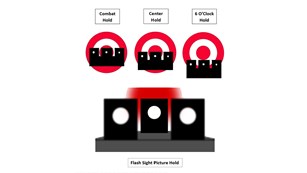
The idea of wild game being healthier than farmed meat is one of those things that everyone just sort of knows and accepts without question, based mostly “well, it’s more natural, and natural is better, right?”
All else being equal, natural is usually better, but more specifically, what is it about wild game that gives it better nutritional value than farmed meat? Many people point to the fact that it’s leaner, which is almost always true. But nutrition is a bit of a minefield these days, and not everyone agrees that fat is unhealthy and saturated fats or animal fats are bad for you. For that reason, I’m going to put aside the “lean is better” assumption and just look at the facts of nutrient profiles—then you can decide for yourself.
Venison vs. Beef
According to nutritionx.com, a three-ounce serving of venison contains 128 calories, 2 grams of fat, 67 mg of cholesterol, 3.5 mg of iron and 338 mg of potassium. To compare, three ounces of lean beef contains 196 calories, 10 grams of fat, 76 mg of cholesterol, 2.6 mg of iron and 368 mg of potassium. According to hunter-ed.com, both venison and beef are packed with B vitamins like B2, B3, B6, and B12—but “venison offers almost twice the amount of B vitamins, supporting nerve function and hormone regulation more effectively.” Venison also has a more favorable omega-3 to omega-6 ratio than grain-fed beef, which supports heart health and reduces inflammation.
Wild Boar vs. Pork
Nutritionx.com says a four-ounce serving of ground wild boar has 140 calories, 4 grams of fat, 70 mg of cholesterol, 24 grams of protein and 10 percent of your daily iron. Meanwhile, a four-ounce serving of ground pork has 300 calories, 23 grams of fat, 80 mg of cholesterol, 19 grams of protein and 6 percent of your daily iron. It’s worth noting here that in both cases, they are using name-brand meat, so it might not be representative of true wild hog meat you’d be obtaining on a hunt (nutrition facts for that are really hard to find). And ground pork can vary widely in its nutritional content based on how much fat the butcher is including.
Wild Duck vs. Farm Duck
The MyFitnessPal app on my phone lists “Duck breast meat, wild, 3 ounces” with 105 calories, 3.6 grams of fat, 16.9 grams of protein, 65 mg of cholesterol, 21 percent of my daily iron and 9 percent of my daily vitamin C. To compare that with farmed meat, “Duck meat, duck breast, 3 ounces” has 115 calories, 5.6 grams of fat and 15.4 grams of protein. In this case, they’re really not all that different—but wild duck has more variety than probably any other animal in this list, as there are so many species with very different diets. It’s hard to express all that variety in a single nutrient profile.
Goodwholefood.com says, “Due to the higher levels of fat in domesticated ducks, they also have double the omega-6, which can cause inflammation if not balanced with omega-3 levels. Domesticated ducks have higher levels of protein, vitamin A (though still in low quantitates), niacin, pantothenic acid, zinc and selenium. They also contain some vitamin E and vitamin K, while wild ducks typically do not. Wild ducks are a better source of thiamin, vitamin B6, folate, vitamin B12, iron, magnesium, phosphorus, potassiumand copper. They also contain vitamin C, which you won’t find in a domesticated duck.”
Wild Turkey vs. Farmed Turkey
Interestingly, it seems that farmed turkeys are actually a little higher in protein than wild turkey, because of their very specific and controlled diet. Wild turkeys tend to be lower in fat because they’re much more active. MyFitnessPal lists “Wild turkey breast, generic, 3 ounces” as having 140 calories, 0.9 grams of fat, 22.3 grams of protein, 47 mg of cholesterol and 21.4 percent of my daily iron. To contrast that with domestic turkey, “Turkey breast meat, 3 ounces” has 125 calories, 1.8 grams of fat, 25.6 grams of protein, 68 mg of cholesterol and just 3.4 percent of my daily iron—plus 84 mg of sodium. And according to beardedbutchers.com, “Darker meat from thighs and legs has even less fat but slightly less protein.”
Pheasant vs. Chicken
Wild pheasant is often compared to chicken in terms of flavor profile, but how does it stack up nutritionally?
Foodstruct.com has a really detailed breakdown for this, comparing 300 grams of pheasant meat to 300 grams of chicken meat. Both come out to about 235 calories, but the pheasant has 32.4 grams of protein and 12 grams of fat, while the chicken has 27.3 grams of protein and 13.6 grams of fat. The vitamin and mineral profiles differ, too. Pheasant is higher in vitamin B6, B12, iron and phosphorus, but chicken has more vitamin B3, selenium and zinc.














































